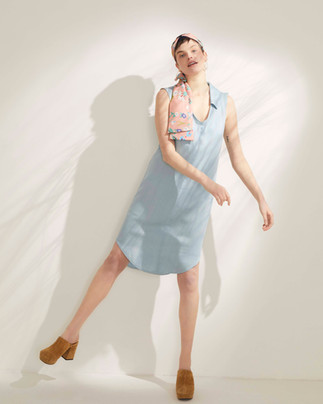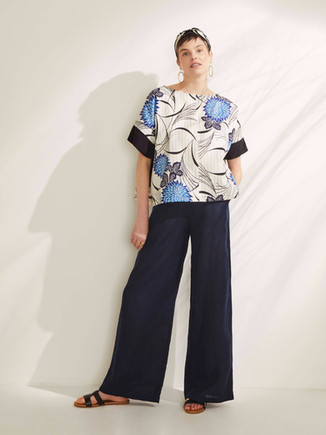Sustainable fabrics at 33bis
- 33bis Artisanal Edition
- Jun 20, 2023
- 3 min read
What is Tencel?
We are very excited that we found the dead-stock fabric of Tencel and get to use it in our Summer clothing collection. Tencel is a semi-synthetic fabric, a form of rayon, and is made from wood pulp!
Tencel is a breathable fabric that wicks moisture effectively & quickly on those humid hot days. With anti-bacterial properties, Tencel wicks moisture at a faster rate, bacteria will have less time to grow, & you can remain fresher for longer. When wearing our clothing we want our customers to feel comfortable throughout the day with confidence & style.
How is it sustainable?
Tencel is made with wood chips from eucalyptus, birch oak, or bamboo, it has a strong structure, which means it is naturally more resistant to pilling, in comparison to cotton, this means your clothing can last longer, buying less & choosing better is a mantra we at 33bis believe in.
The manufacturing process is less toxic & wasteful than other fabrics out there. Tencel production is considered a 'closed loop' which means that there are no harmful by-products released during production, and the chemicals used can be reused again & again meaning there is almost no waste. The process of making Tencel is short & simple compared to other synthetic fibres which means that less water & energy is required.
What is Linen?
Linen is a durable, yet lightweight & breathable fabric that is perfect for keeping you cool in the summer and warm during the winter. A perfect textile for clothing especially the summer collection as linen wicks moisture swiftly and combined with it’s naturally hypoallergenic, anti-bacterial & anti static properties there is no chance for bacteria or fungi to grow, making it perfect for people who have sensitive skin. As it’s a rigid fabric this fabric does tend to wrinkle but can be quickly ironed out!
How is it sustainable?
Linen is made from the flax plant, a fast-growing crop, with only 100 days from planting to harvesting, when grown organically there is no need for irrigation, fertiliser or pesticides as the plant is naturally pest-resistant.
Flax takes zero litres of water irrigation to produce 1 kilogram of flax, this is incredible in comparison to over 7,000 litres of water needed to produce the same volume in cotton. Irrigation means that water is artificially introduced to the soil via tubes, pumps and sprays. When we say flax takes zero litres it means that they can grow by relying solely on rainwater.
Another sustainable factor of Flax is that there is zero wastage, every part of the plant can be woven into a fibre, cutting down on waste left over from the spinning and weaving process this means that less water & energy is required
What is Cupro?
We are super happy to have found the deadstock fabric of the silk-like semi-synthetic fabric, Cupro, a form of rayon, what excited us about this fabric is that it is made from recycled cotton waste!
A perfect textile for clothing with its soft-to-the-touch luxe feel, this fabric is nicknamed vegan silk as it is vegan & cruelty-free. Personally, rather than silk there is a slight velvety feel that gives the fabric texture and depth. In contrast to silk, this fabric is easy to wash at colder temperatures as it doesn’t do well in higher temps.
How is it sustainable?
Cupro could be considered as sustainable as it is made using the by-product from the cotton industry, of which there is a lot out there, however, it is worth noting that the process to make these smaller strands of cotton waste into a textile uses hazardous chemicals in the manufacturing process which means there are potential for water pollution and damaging surrounding ecosystems.
End of lifecycle
All these fibres are made from natural fibres which means that at the end of the fabric's lifecycle, it is sustainable as it is biodegradable! This means that the fabric will naturally break down to a molecular level and will be reabsorbed into the surrounding environment within a matter of years instead of centuries.
Not contributing to landfill is a huge part of 33bis ethos, we use deadstock fabrics to avoid more textiles needlessly going to landfills. These fabrics destined for the landfill can have a fulfilling life as a headband or clothing piece that will be loved & enjoyed for many years.
For a more in-depth read, here are a few links:
treehugger.com/what-is-cupro-sustainable-fabric-overview-5192291 https://theecohub.com/cupro-fabric/
























Comments